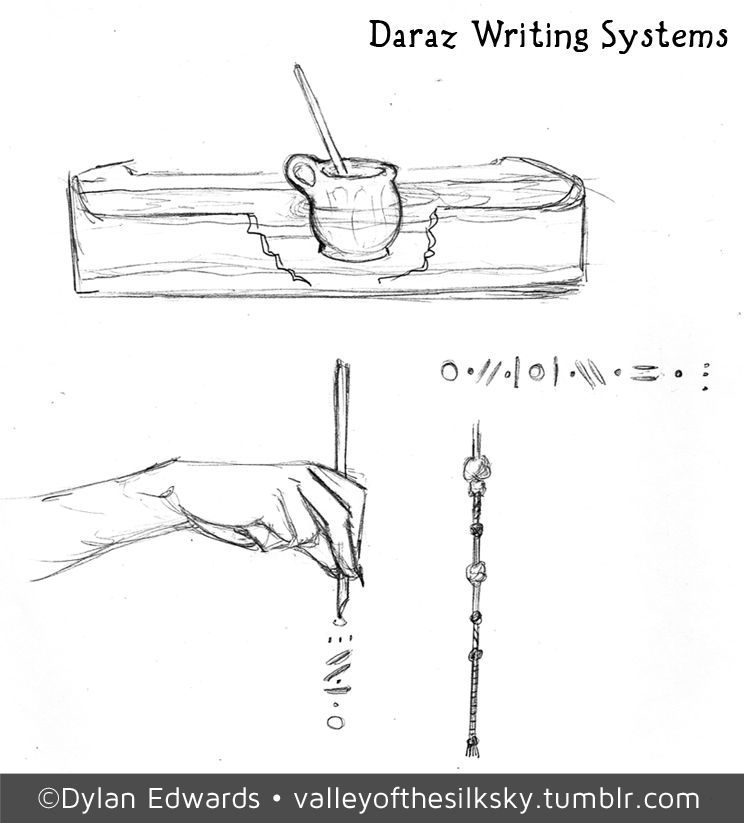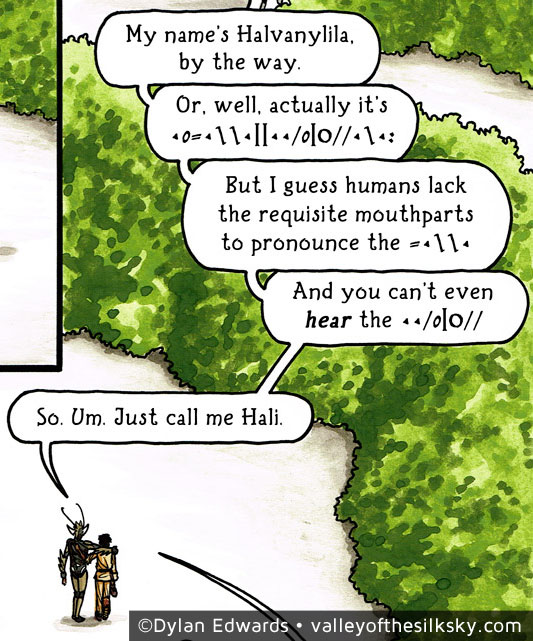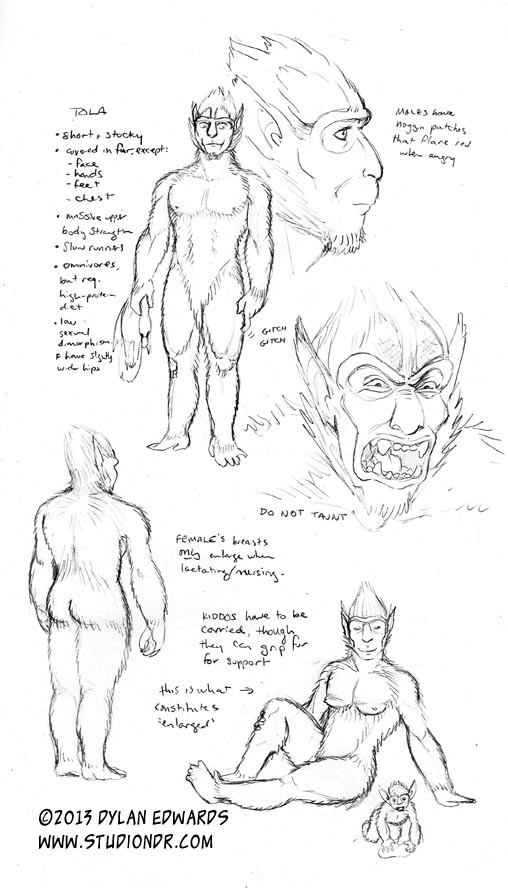 While there are several different types of Tolas, the ones who make their appearance in “Valley of the Silk Sky: Medicine; Run” are primarily Mountain Forest Tolas.
While there are several different types of Tolas, the ones who make their appearance in “Valley of the Silk Sky: Medicine; Run” are primarily Mountain Forest Tolas.
Migration
Mountain Forest Tolas spend the summers at high elevation and the winters at low elevation. They maintain permanent settlements at each endpoint, and migrate between them as the seasons change. Migration occurs over the course of several weeks, with small bands taking different routes through the mountain forests. A small maintenance group will stay on at each permanent settlement during the off-season, as will anyone who is too old or too sick to travel.
Tolas maintain large swaths of the mountain forests, planting different types of edible and medicinal foliage at different elevations. Rather than carry food with them as they travel, they follow pre-planned routes rich with fruit- and nut-bearing trees and other plants. The staggered migration allows for waves of ripening food to sustain each band in turn.
Interactions with Humans and Daraz
Tolas and humans have little direct contact due to significant language barriers (humans can’t physically vocalize much of the Tolas’ speech, and vice-versa). The Daraz, whose vocalization capabilities span across both language groups, may act as interpreters between Tolas and humans.
The Daraz helped broker one of the major treaties between humans and Tolas, which governs the use of forests. Humans are allowed to harvest small amounts of food and medicinals from Tola-maintained forests, but are not permitted to cut down any trees or otherwise remove plants without prior consultation.

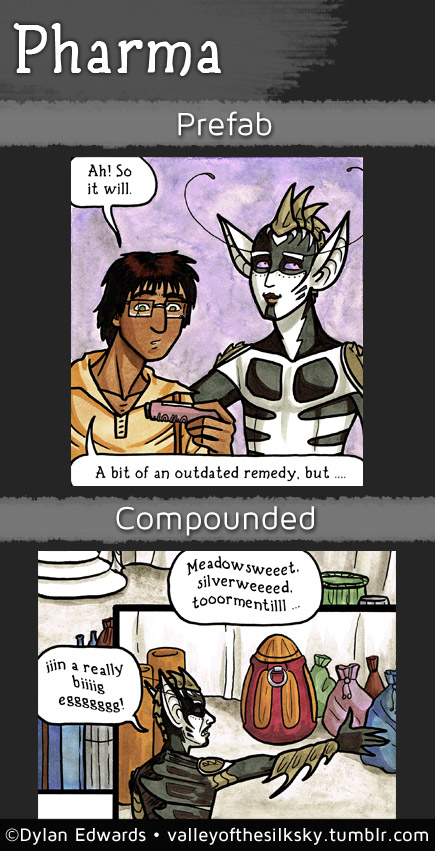 As discussed in the article on
As discussed in the article on 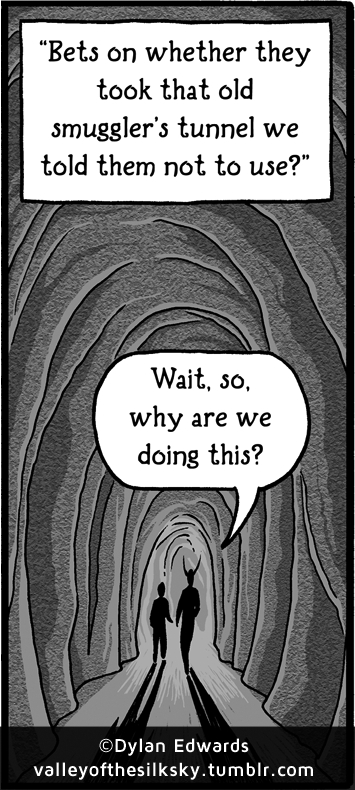 The country that occupies the Valley, Pocalo, is divided into provinces, and each province is stacked on top of the other. The massive structure that houses all these provinces was built up slowly over the course of thousands of years. For most of that time, the only way to get from one province to another was to take a long trek up or down the mountains that anchor the structure.
The country that occupies the Valley, Pocalo, is divided into provinces, and each province is stacked on top of the other. The massive structure that houses all these provinces was built up slowly over the course of thousands of years. For most of that time, the only way to get from one province to another was to take a long trek up or down the mountains that anchor the structure.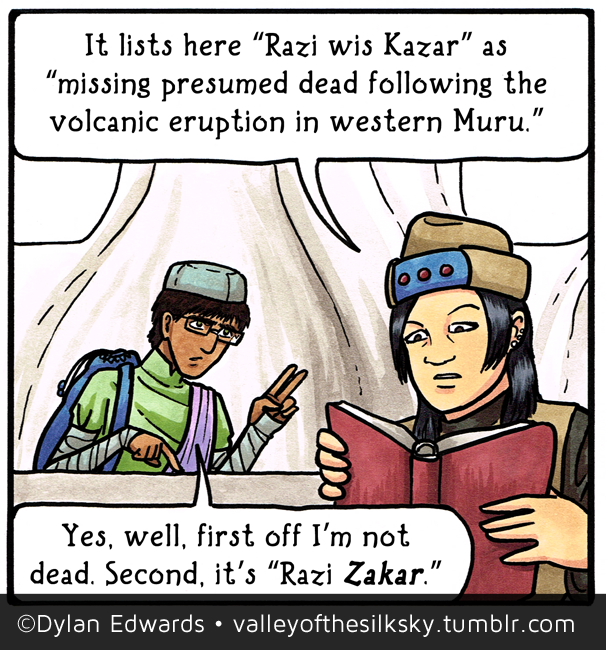

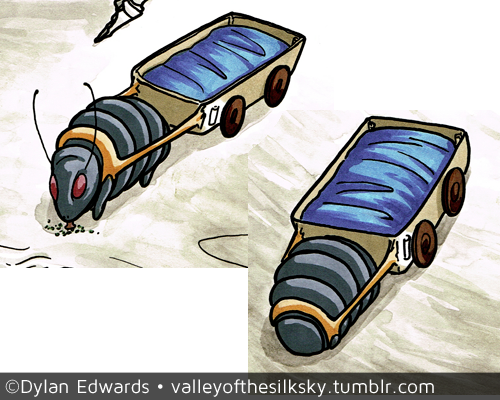 The names humans have for many of the flora and fauna of the Valley come from Rovari, the Daraz language (Daraz are native to the Valley, humans are not). This particular creature is called merev gombi in Rovari, which literally means “hard sphere.” Humans usually just call this animal “merev.”
The names humans have for many of the flora and fauna of the Valley come from Rovari, the Daraz language (Daraz are native to the Valley, humans are not). This particular creature is called merev gombi in Rovari, which literally means “hard sphere.” Humans usually just call this animal “merev.” 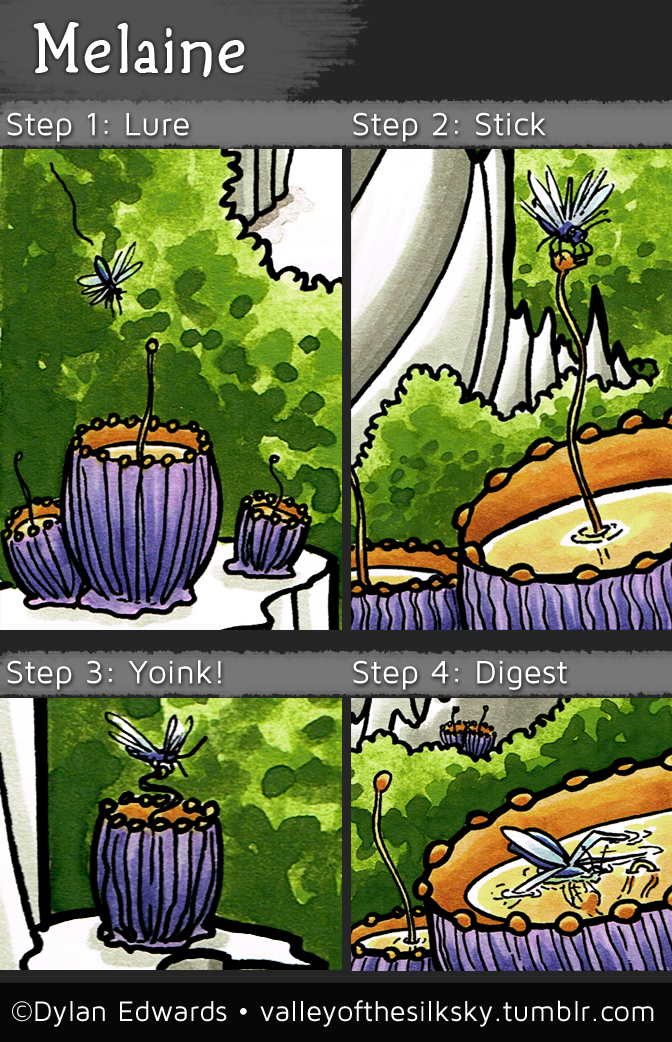
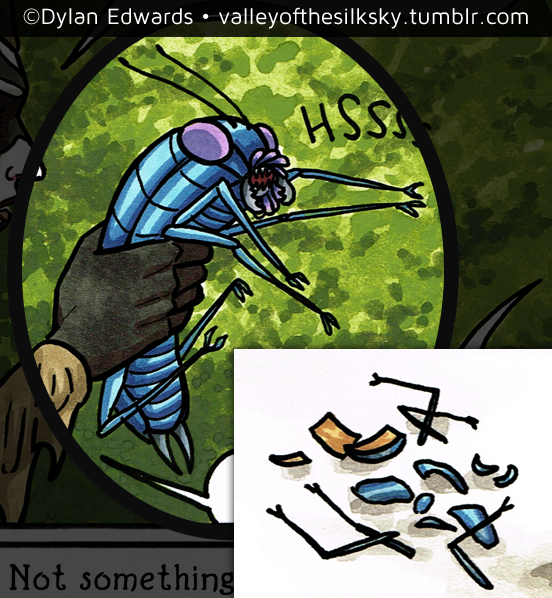 Ah, the humble blue beetle, such a common sight in the Valley it gets the most obvious possible name. It’s also one of the main sources of animal protein for the citizens of Pocalo. So delicious, so nutritious.
Ah, the humble blue beetle, such a common sight in the Valley it gets the most obvious possible name. It’s also one of the main sources of animal protein for the citizens of Pocalo. So delicious, so nutritious.